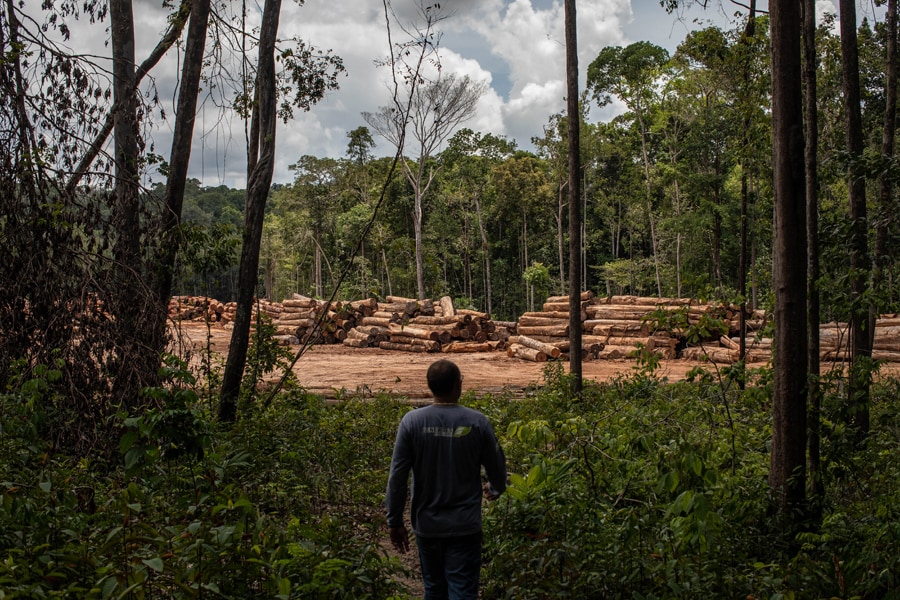
The big challenges as nations try to craft a new global climate deal
Scientists have said that the world's nations need to cut global emissions from fossil fuels roughly in half this decade to keep average global temperatures from rising beyond 1.5 degrees Celsius compared with preindustrial levels
 A legal, sustainable-use logging site in Brazil’s Para state, in October 2019. Negotiators at the COP-26 summit still have major disagreements, like how to ensure fair accounting of carbon offset programs. (Victor Moriyama/The New York Times)
A legal, sustainable-use logging site in Brazil’s Para state, in October 2019. Negotiators at the COP-26 summit still have major disagreements, like how to ensure fair accounting of carbon offset programs. (Victor Moriyama/The New York Times)
GLASGOW, Scotland — Organizers of the United Nations climate summit on Wednesday released an initial draft of a new global agreement to fight global warming, calling on countries to “revisit and strengthen” by the end of 2022 plans for cutting greenhouse gas emissions and to “accelerate the phasing-out of coal and subsidies for fossil fuels.”
The language on coal and government fossil fuel subsidies would be a first for a U.N. climate agreement, if it stays in the final version. But many countries and environmentalists said the rest of the document was still too vague on crucial details like what sorts of financial aid richer nations should provide poorer ones struggling with the costs of climate disasters and adaptation.
The draft “is not the decisive language that this moment calls for,” said Aubrey Webson, chairman of the Alliance of Small Island States, a group of countries that are among those most threatened by climate change.
Scientists have said that the world’s nations need to cut global emissions from fossil fuels roughly in half this decade to keep average global temperatures from rising beyond 1.5 degrees Celsius (2.7 degrees Fahrenheit) compared with preindustrial levels. That’s the threshold beyond which the risks of deadly heat waves, droughts, wildfires, floods and species extinction grow immensely. The planet has already warmed 1.1 degrees Celsius.
Negotiators here from nearly 200 countries are likely to demand significant changes in the remaining days as the talks enter their last, most difficult stretch. By tradition, a final agreement requires every party to sign on — if any one nation objects, talks can deadlock.
©2019 New York Times News Service







